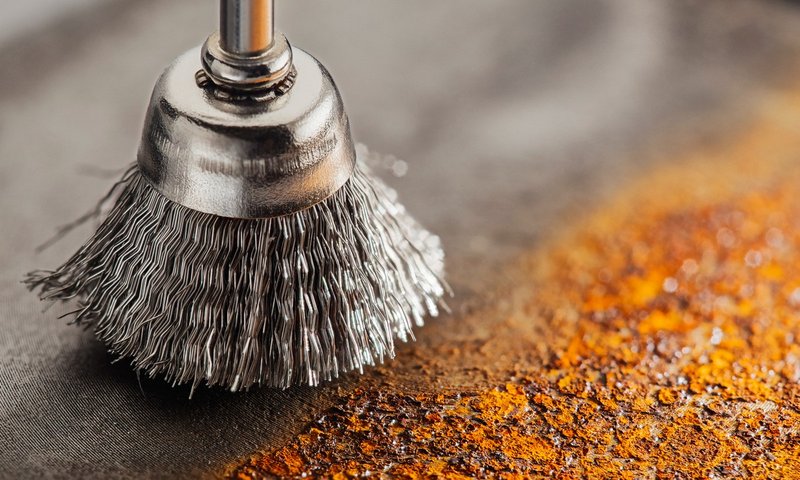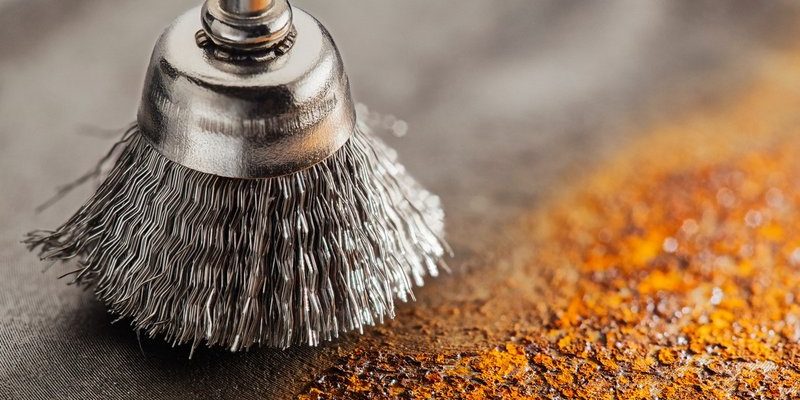
Here’s the thing: getting rid of tough rust on outdoor hinges is a very different game than cleaning up a bit of dust. You can’t just grab a paper towel and hope for the best. It’s a process that usually needs the right tools and a bit of elbow grease. Some tools will scrub away surface rust in seconds, while others are made for the heavy-duty stuff—rust that’s practically reset the original color and texture of your hinges.
There’s no one-size-fits-all solution, either. Sometimes you’re dealing with cheap hardware store hinges, other times it’s a pricey exterior door with a fancy locking system or a shed that’s seen better days. So, let’s break down the best tools (and a few clever tricks) for removing stubborn rust from any exterior hinge—so you can get things moving smoothly again.
Why Do Exterior Hinges Rust So Quickly?
Rust is the enemy of any metal that lives outside, and hinges are especially vulnerable. Most exterior hinges are made from steel or iron, which both react with water and oxygen to form rust—basically, metal’s way of waving a white flag. Rain, humidity, and even morning dew can all start the rusting process, especially if the protective paint or coating has chipped away.
You might be wondering: “Shouldn’t my gate or door be built to handle this?” Honestly, even the best hardware can only take so much. Hinges deal with constant movement and pressure, which can wear away protective surfaces and expose raw metal. Over time, even a little rust can sync deep into the cracks where it’s hard to reach. If you live near the ocean, salty air speeds up everything. Suddenly, your outdoor hinges look like they’ve been on a shipwreck.
What matters most is tackling the rust before it gets out of hand. Waiting too long can permanently damage the hinge, making it impossible to reset or repair. Knowing why rust happens is the first step to picking the right removal method and tool.
Manual Tools: Wire Brushes, Sandpaper, and Scrapers
For most people starting out, simple manual tools are the go-to fix for rusty exterior hinges. These are the classics—no power required, just good old-fashioned muscle. Let me explain how each works in real life.
- Wire brushes come in all shapes and sizes: handheld, toothbrush style, even drill attachments. A stiff wire brush can scrape off surface rust fast, especially if you work at the hinge from multiple angles. The bristles reach into the small crevices (kind of like a remote trying to pair with a tricky device—you’ve got to get the angle just right).
- Sandpaper is great for smoothing things out after the bulk of the rust is gone. Start with a coarse grit (60–80) for heavy rust, then move up to finer grits for a clean finish. Wrap it around the hinge to hit every curve.
- Paint scrapers or putty knives can help you chip off bigger flakes that just won’t budge. Don’t go too wild—if you have delicate hardware, these can scratch or gouge softer finishes.
Manual tools give you a lot of control, but they do take time and effort. If the rust has really synced into the metal, you might need to level up to more serious options.
Chemical Rust Removers: When Elbow Grease Isn’t Enough
Sometimes, scrubbing away at stubborn rust just isn’t cutting it. That’s when chemical rust removers jump in to help. These products use powerful ingredients to break down the rusty layer so you can wipe or scrub it off with much less effort.
You’ve probably seen brands like Evapo-Rust or WD-40 Specialist Rust Remover. These are popular because they actually dissolve rust, rather than just scraping at the surface. To use them:
- Apply generously to the rusty hinge. Depending on the product, this might mean spraying, brushing, or soaking.
- Let it sit—some products take just a few minutes, others might recommend a longer soak for deep buildups.
- After waiting, scrub away the loosened rust with a brush or rag. Rinse (if required) and dry thoroughly.
The big win here is efficiency. Chemical removers work especially well if you have a whole row of hinges—like on a garden gate with multiple sections—or if you just want a quick sync with less muscle. The downside? Some people don’t love using chemicals, especially around kids or pets, so always check the label and follow directions.
Power Tools: For Hinges with Deep, Tough Rust
If you’ve already tried brushes and chemicals and the rust is still glued on tight, it might be time to pair up with some power tools. Don’t worry—this isn’t as intimidating as it sounds. In fact, a cordless drill with the right attachment can make rust removal almost fun.
- Drill-mounted wire brushes are a game-changer. These spin fast, blasting away layers of rust in seconds. They’re perfect for heavily rusted hinges that manual scrubbing just can’t reset.
- If you have a rotary tool (like a Dremel), try a small wire brush or abrasive wheel. These get into tiny pockets and hard-to-reach spots—think about cleaning up the code on a really old, troubled device.
- Oscillating multi-tools with sanding attachments can also help cover wide, flat areas fast.
Just be careful: Power tools can get aggressive fast. Don’t push too hard or hold them in one spot for too long, or you might grind away more than just the rust. Always wear eye protection—you don’t want bits of rusty metal flying your way.
Natural Alternatives: Vinegar, Baking Soda, and Lemons
Maybe you’re not into harsh chemicals, or you just want to give something from your kitchen a try first. There are natural ways to remove rust from exterior hinges, and honestly, they’re more effective than you might think—especially for light or moderate rust.
- White vinegar is a classic. Soak a rag or paper towel in vinegar, wrap it around the hinge, and leave it for a few hours. The acid helps loosen the rust, making it easier to scrub off.
- Baking soda paste (mix water and baking soda until thick) can be spread on the hinge and scrubbed with a brush. It’s gentle, so don’t expect miracles on heavy rust, but it’s great for maintenance.
- Lemon juice and salt also work—squeeze fresh lemon over the hinge, sprinkle on salt, and scrub with a toothbrush after an hour or two.
Here’s the thing: Natural methods are slower, and probably won’t reset hinges covered in years of rust. But for quick fixes or regular touch-ups, they’re a safe, easy way to keep outdoor hardware in good shape.
Protecting Hinges After Rust Removal
Once you’ve finally banished the rust, you don’t want it returning a week later. Protecting your newly cleaned hinges is just as important as removing the rust in the first place. Think of it like finishing a paint job—if you don’t seal it up, all that work could go to waste.
The easiest first step is to coat the hinges with a lubricant—products like WD-40, silicone spray, or even a dab of household oil. These create a water-resistant barrier, helping to keep moisture (and future rust) out. Just spray or wipe on a thin, even layer and move the hinge a few times to distribute the coating.
If your hinges are painted, consider touching up any chips or bare spots. For unfinished metal, you can also use a light clear coat for extra protection. For gates and shed doors in really wet climates, try checking your hinges every couple of months and reapplying as needed.
Here’s an insight to remember:
Regular touch-ups and quick cleaning are the “code” to keeping rust away. A little effort every now and then beats a full-scale removal later on.
When to Replace Versus Repair Rusty Hinges
Let’s be honest—not every hinge is worth saving. Sometimes, after all the scrubbing, soaking, and sanding, you’ll find the metal underneath is too far gone. If the rust has eaten away at the hinge to the point that the structure is brittle, wobbly, or the screw holes are shot, it’s time to reset your expectations and swap the hinge out.
How do you know when to replace instead of repair?
- The hinge won’t move even after cleaning. This usually means the internal parts are fused with rust.
- You see cracks, holes, or metal crumbling away. No tool can sync broken metal back together.
- The screws won’t tighten up because the holes are too corroded.
In these cases, buying a fresh, rust-resistant hinge (like stainless steel or zinc-plated models) is usually the best move. For a little extra peace of mind, look for “exterior” or “weatherproof” hardware when you shop. They’re designed to handle outdoor trouble much better and will keep your doors and gates gliding for years.
Comparing Store-Bought Solutions to DIY Approaches
You might be wondering whether it’s better to grab a fancy rust remover or just raid your cleaning cupboard. Here’s the rundown: store-bought solutions like commercial rust removers and drill attachments are unbeatable for speed and tackling tough, deep-set rust. They’re basically the power tools of the rust world—great for quick results and heavy use.
On the flip side, DIY methods like vinegar and baking soda are awesome for light rust and folks who want to avoid chemicals. They’re cheap, safe, and perfect for stuff you use a lot (like a shed lock or garden gate where pets might lick around).
Honestly, a mix of options is often best. Start gentle, ramp up if needed, and don’t be afraid to try a few different syncs to find what works for your hinges and budget.
Final Thoughts: Keeping Your Exterior Hinges Rust-Free
Dealing with rusty outdoor hinges isn’t anyone’s favorite job, but it doesn’t have to take over your whole weekend. With the right tools—whether it’s an old wire brush, some vinegar from the pantry, or a serious rust remover—you can reset your hinges and get doors, gates, and sheds opening smoothly again. Remember to protect your handywork with a little lubricant or a quick paint touch-up, and check in every few months for future trouble.
Stubborn rust can be frustrating, but it’s not impossible to beat. A bit of effort (and the right tool for your situation) can make those old hinges work like new, keeping your home secure, your yard looking sharp, and your repairs simple.
